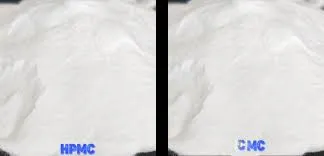
9월 . 28, 2024 19:59 Back to list
HPMC Use in Tile Adhesive Formulations and Applications
HPMC for Tile Adhesive A Comprehensive Overview
Hydroxypropyl Methylcellulose (HPMC) is a versatile cellulose ether widely used in various applications, particularly in construction materials like tile adhesives. This article explores the significance of HPMC in tile adhesive formulations, its properties, benefits, and the role it plays in enhancing performance and ease of application.
What is HPMC?
HPMC is a modified form of cellulose, derived from natural cellulose sources. The modification process results in a white, odorless powder that is soluble in water and can form a gel-like substance. It is characterized by its ability to provide thickening, binding, and film-forming capabilities in aqueous solutions. These properties make it an ideal additive in tile adhesive formulations.
Importance of HPMC in Tile Adhesives
Tile adhesives are essential for ensuring a strong bond between tiles and substrates, which is critical for the durability and longevity of tiled surfaces. The incorporation of HPMC into tile adhesives offers several advantages
1. Increased Workability HPMC improves the workability of tile adhesives, allowing for easier application. It provides a smooth texture, enabling easier spreading and leveling of the adhesive on surfaces. This is particularly beneficial in large-scale tiling projects where efficiency is crucial.
2. Water Retention One of the standout properties of HPMC is its excellent water-holding capacity. This feature is vital for tile adhesives as it prevents premature drying and allows the adhesive to remain workable for extended periods. This increased open time provides installers with more flexibility to adjust tiles after application, reducing the likelihood of mistakes.
hpmc for tile adhesive

3. Adhesion Enhancement HPMC plays a significant role in enhancing the adhesion properties of tile adhesives. Its unique molecular structure allows it to form a strong bond with both the tiles and the substrate, ensuring that tiles remain securely in place. This is especially important in environments that are subject to moisture or temperature fluctuations, where strong adhesion is paramount.
4. Improved Flexibility and Anti-Sagging Properties The addition of HPMC to tile adhesives contributes to improved flexibility, which is critical in preventing cracking and breaking. Additionally, it helps in reducing sagging, allowing tiles to maintain their position during the setting process. This quality is particularly important for larger tiles, where gravity can lead to alignment issues if the adhesive sags.
5. Environmental Compatibility HPMC is water-soluble and biodegradable, making it an environmentally friendly choice compared to some synthetic additives. The use of HPMC in tile adhesives aligns with the growing trend toward sustainable construction practices, appealing to both manufacturers and environmentally conscious consumers.
Formulation Considerations
When formulating tile adhesives with HPMC, it's essential to consider the viscosity and concentration levels necessary for achieving the desired properties. Various grades of HPMC are available, each with different viscosity levels which can be tailored to specific application requirements. Manufacturers often test different formulations to strike a balance between workability, adhesion strength, and setting time.
Conclusion
HPMC has established itself as a crucial ingredient in tile adhesive formulations, contributing to better workability, enhanced adhesion, and overall performance. Its multifunctional properties not only improve the efficiency of tile installation but also extend the longevity and durability of tiled surfaces. As the construction industry continues to evolve, the relevance of HPMC will likely grow, supporting the trend towards more efficient, effective, and environmentally friendly building materials.
In summary, the utilization of HPMC in tile adhesives exemplifies the intersection of innovation and practicality in construction materials. By enhancing the application experience and final performance, HPMC stands out as a pivotal component in modern tiling solutions, making it an essential topic for professionals in the field to understand and embrace.
-
Versatile Hpmc Uses in Different Industries
NewsJun.19,2025
-
Redispersible Powder's Role in Enhancing Durability of Construction Products
NewsJun.19,2025
-
Hydroxyethyl Cellulose Applications Driving Green Industrial Processes
NewsJun.19,2025
-
Exploring Different Redispersible Polymer Powder
NewsJun.19,2025
-
Choosing the Right Mortar Bonding Agent
NewsJun.19,2025
-
Applications and Significance of China Hpmc in Modern Industries
NewsJun.19,2025







